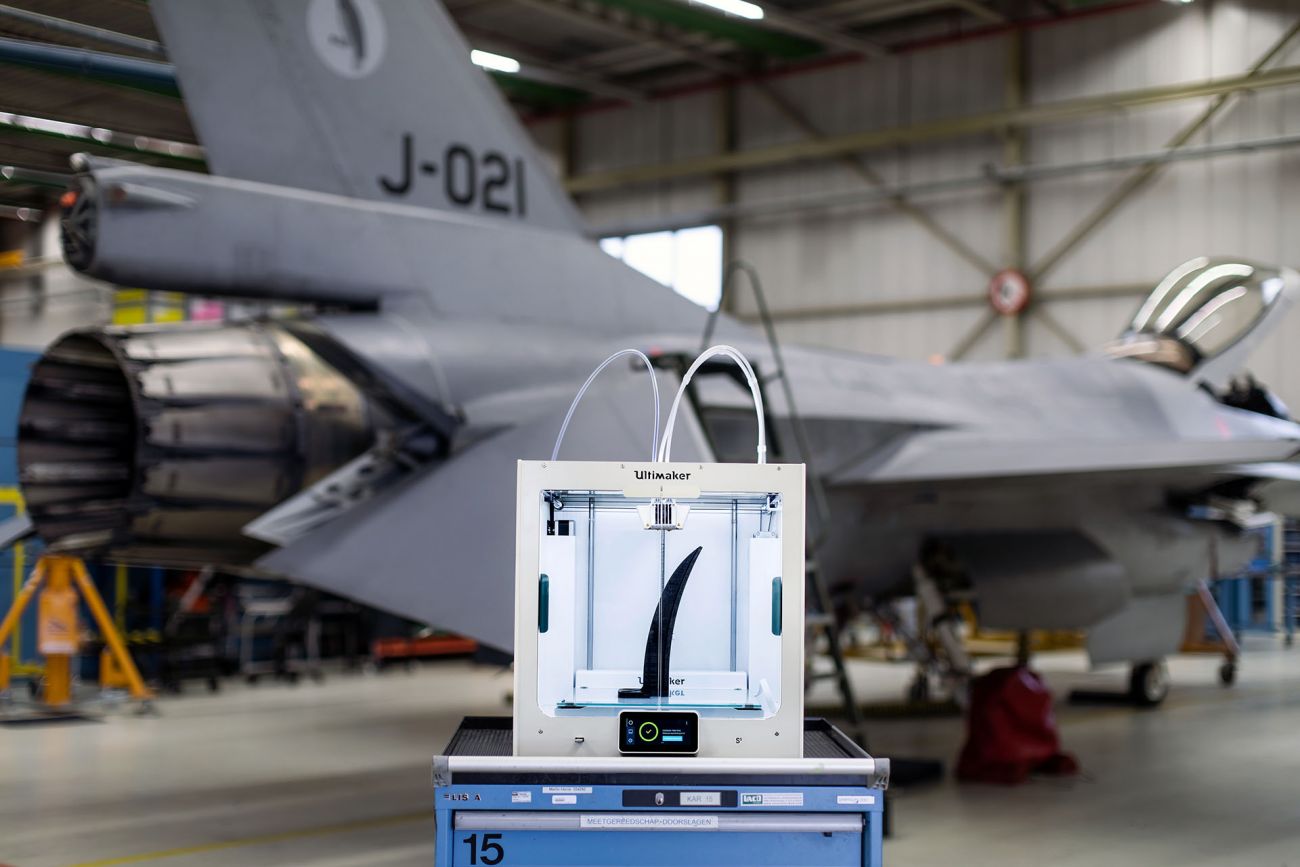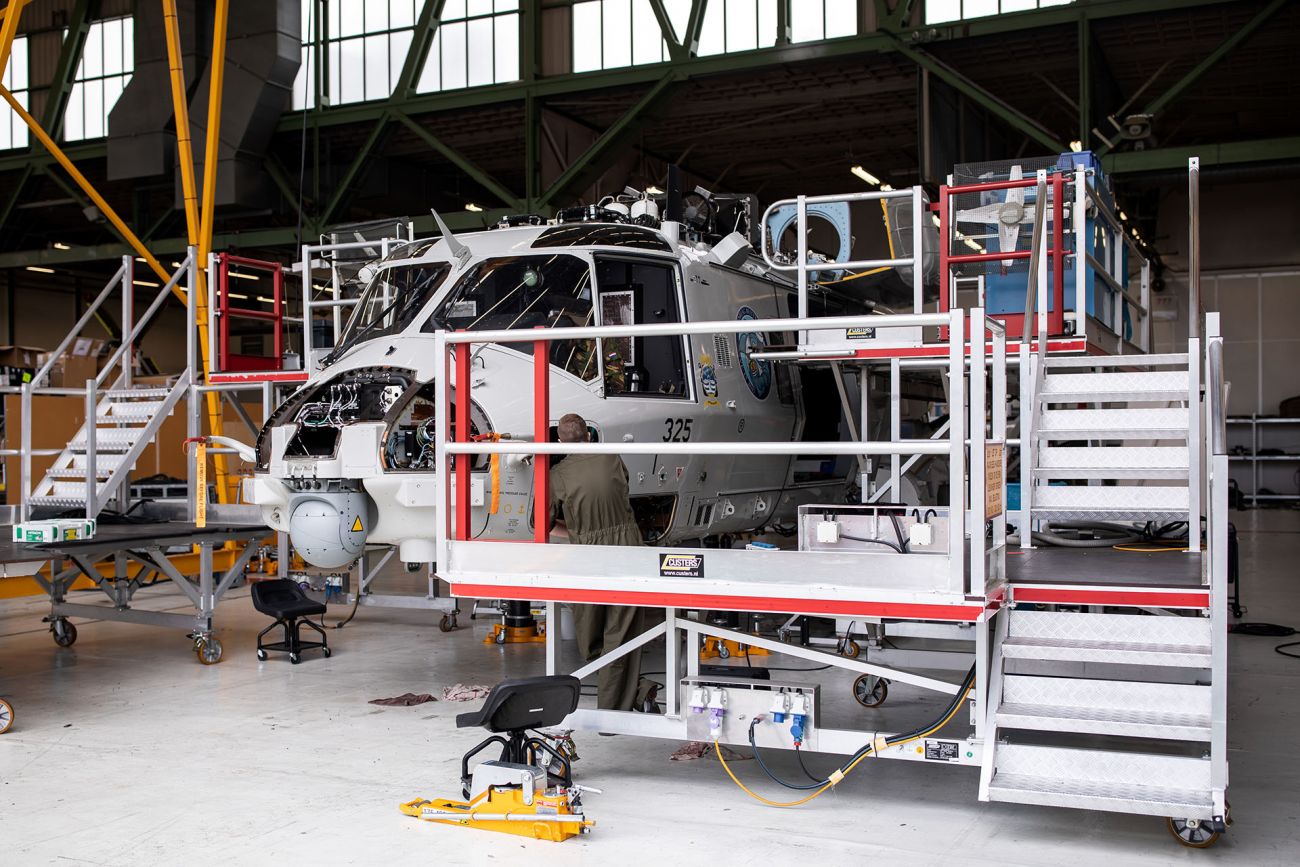Royal Netherlands Air Force (RNLAF) is using Ultimaker’s 3D printers to accelerate maintenance and repair operations at the Woensdrecht Air Force Base.
Bas Janssen, CLSK AIR Innovation Coach said, “We make tools ourselves because we have very unique items within the Air Force.”
“With a 3D printer, we can repair our components quicker and more safely. We use it to print toolings, fixtures, and prototypes with the highest standards.”

A designer, an airplane, and a 3D printer
3D printers can reduce lead times and enable on-spot maintenance and repair. Due to these benefit, the army and air force of various countries have shown a lot of interest in the technology. Many U.S Military and Air Force (USAF) bases have made 3D printers and 3D scanners as part of their repair toolkit. For example, the Travis Air Base uses 3D scanners for quality assurance and rapid repair of aircraft. In addition to this, the USAF’s MAMLS project is geared towards integrating advanced 3D printing techniques across the United States.
To fully integrate the 3D printing technology in maintenance operations of RNLAF, Bas Janssen founded the MakAirsJop, a makerspace for defense personnel. At the MakAirsJop recruits can learn about design and 3D printing for aircraft maintenance and prototyping.
Janssen explained, “The people who work with 3D printing often have no technical background, but only need about three hours of training. After that, they start looking for solutions for issues they have in their work.”
For Ultimaker sky is the limit
Royal Netherlands Air Force has Ultimaker 3 and S5 3D printers at the Woensdrecht Air Force Base. The Woensdrecht base is the primary support hub of the Netherlands Air Force and F-16 fighter jets’ repair workshop. Furthermore, the RNLAF training school, Koninklijke Militaire School Luchtmacht (KMSL), is also located in Woensdrecht.
Currently, the Ultimaker 3D printers are used to make fixtures and alignment tools. Furthermore, to save production lead times, maintenance engineers at Woensdrecht are using 3D printers for prototyping, which gives them the freedom to iterate their design. Once the designs are perfected they can be sent for manufacturing using an appropriate method, such as CNC machining.
Moreover, minor solutions are saving the Royal Netherlands Air Force significant amount of money. For example, while transporting airplane engines it is necessary to protect sensitive parts from dust and damage. The engines can now be covered with 3D printed components, whereas before such parts had to be ordered from a supplier, and took weeks to arrive.
Janssen said, “Our transition to a fifth-generation Air Force can only be done with people who realize that they can be a part of that change now, not later.”
“Ultimaker makes it possible to do just that: help people understand what additive manufacturing can do for them right now – without a long learning curve. The current software and hardware help people to make their idea come to life”.

Nominations for 3D Printing Industry 2019 are open. Please let us know about the best applications of 3D printing.
For more news on how 3D printing is transforming manufacturing subscribe to our 3D printing newsletter and follow us on Facebook and Twitter.
If you are thinking about starting a new career, then visit our 3D Printing Jobs site.
Featured image shows the Ultimaker 5 at Royal Netherland Air Force’s Woensdrecht Air Base. Image via Ultimaker.


